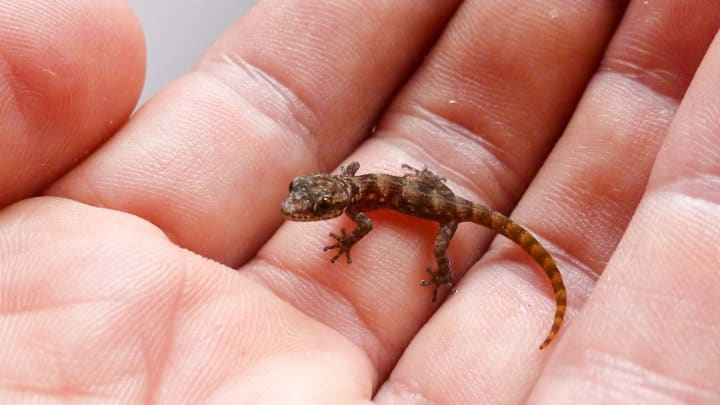Scientists are discovering new species in all corners of the world—and in some cases, they’re stumbling upon old species in places they were previously thought to be extinct. One of the latest rediscovered species is a small gecko that dwells on a Galápagos island.
This Tiny Lizard Is Making a Comeback

According to Smithsonian, international researchers took trips to the Galápagos’ Rábida Island in the eastern Pacific Ocean in 2019 and 2021. During these treks, they were pleasantly surprised to find many leaf-toed geckos wandering around the area. For years, conservationists believed the lizards were locally extinct, as fossils were the only known proof of their existence on the island. You can read more about the reptile’s discovery in the journal PLOS One.
The gecko’s problems can be traced back to the rats that were introduced to Rábida Island sometime within the last 50 years. The invasive species preyed on the island’s native plants, birds, and reptiles like the leaf-toed gecko. Conservationists took matters into their own hands when they launched a rat eradication project in 2011 on many Galápagos islands, including Rábida.
Biologists found one leaf-toed gecko in 2012, but the lizard escaped after it was caught. Fast forward to 2019 and 2021, when scientists came across nine and 10 geckos in each year, respectively.
Why the Leaf-Toed Gecko Is Important

Omar Torres-Carvajal, a curator of reptiles at QCAZ Museum of Zoology, expresses his enthusiasm for the lizards. “[This] research underscores the critical value of collecting specimens and genomic samples for both scientific discovery and conservation efforts in the Galápagos,” he said in a statement. The leaf-toed geckos on Rábida are genetically distinct but closely related to Phyllodactylus maresi, which are found on nearby islands. The international team of scientists officially designated the Rábida population as an Evolutionarily Significant Unit (ESU), indicating the importance of identifying conservation opportunities for the species.
In other news about rediscovered species, researchers recently spotted the elusive Monte Gordo grasshopper. The specimen was first seen in 1980, nearly 45 years prior.
Read More About Animals:
